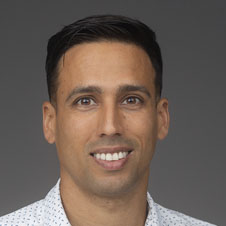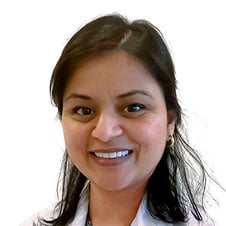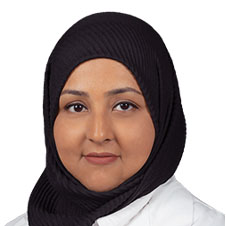An alarming trend continues in the high-stress world of medicine: Women physicians are experiencing burnout at higher rates than their male counterparts. As the demands of the health care industry continue to escalate, exclusive survey data from the AMA suggests that women physicians are facing a unique set of challenges that contribute to heightened levels of burnout.
From juggling long working hours to battling systemic gender inequities, this phenomenon raises critical questions about the well-being of those who dedicate their lives to caring for others.
More than 13,000 responses from physicians and nonphysician providers across 30 states were received from more than 70 health systems that participated in the AMA’s Organizational Biopsy® (PDF). The AMA benchmarking report—which is exclusive data to the AMA that is not published anywhere else—reflects 2022 trends in six key performance indicators: job satisfaction, job stress, burnout, intent to leave an organization, feeling valued by an organization, and total hours spent per week on work-related activities (known as “time spend”).
The purpose of the aggregated data is to provide a national summary of organizational well-being and to serve as a comparison for other health care organizations. The results may be limited by the number of health systems that chose to participate.
For 2022, 57% of female respondents reported at least one symptom of burnout. Among male respondents, by contrast, 47% reported experiencing burnout. And one reason for high burnout rates among women, according to AMA data, is work overload.
Meanwhile, the men and women surveyed experienced similar levels of overall job satisfaction at 71% and 70%, respectively. But while 52% of men reported feeling valued by their organization, only 44% of women felt that way.
At ChenMed—a physician-owned, Miami-based company that operates 125 primary care clinics in 15 states—only 44% of female respondents reported burnout. Meanwhile, 54.2% of women felt valued by their organization.
Here is how this value-based care organization is taking steps to reduce burnout, improve job satisfaction and enhance the provider experience while delivering better health to low income older adults with complex chronic conditions.
Optimize time for all
While work overload is a major driver of burnout among women physicians, at ChenMed 42% of respondents indicated they spent no more than two hours on work outside of work each week-which. This is a major win for the organization.
“We know our physicians are most happy when they’re doing what they love and making a difference in their patients’ lives ... That’s why we have put such a strong emphasis on working collaboratively to maximize uninterrupted quality time with patients by using provider input to better standardize work practices and refine processes to be more efficient,” said Joel Palau, manager of employee health and wellness at ChenMed in Hollywood, Florida.
“We’ve also spent a lot of time investing in our care teams and making sure that they’re fully trained and ready to support our physicians,” Palau said. The company prides itself on “really listening to our physicians looking for that next opportunity to give them back time.”
“One of our most recent initiatives included blocking out protected time in physicians’ schedules for care coordination. This effort supports providers by giving them enough time for the extra administrative duties and responsibilities that go along with delivering VIP care to their panel of 400 patients and also helps them avoid taking any work home with them.” he said. “We’ve also looked at what we can do to reduce the overall workload in our centers.”
“Currently, we have a phone call triage pilot going on to address patient needs sooner and make sure only the most-essential messages are being routed to providers and are looking into new ways to leverage technology in efforts to operate more efficiently and reduce the overall work-related stress at the centers,” Palau said. “This allows our provider led teams to give their full attention to the patients who are right in front of them.”
“In addition to supporting daily life at the centers we also recognize just how much work-life integration means to our providers, especially for our female physicians in their childbearing years,” he said. “Our teams are continuously striving to offer our physicians the greatest possible flexibility to work in a way that meets their individual preferences.
“It’s all about understanding our physicians needs and making sure that we’re prioritizing the next most important initiative based on that feedback,” Palau added.
Beyond that, ChenMed is taking part in the AMA Joy in Medicine™ Health System Recognition Program, which sets “up a strong road map for what to focus on,” he said. “And one of the key areas that we’re looking into with that has been around capturing our EHR data and how we can measure some of these things like work outside of work and really open our eyes to what are those next opportunities for optimizing our physicians’ time.”
Reducing physician burnout is a critical component of the AMA Recovery Plan for America’s Physicians.
Far too many American physicians experience burnout. That's why the AMA develops resources that prioritize well-being and highlight workflow changes so physicians can focus on what matters—patient care.
Nurture women physician leaders
“We’ve put a lot of emphasis on the soft leadership skills that maybe aren’t always taught, but they’re so important to practice refine if we want to truly build a culture that supports well-being,” Palau said.
That includes an effort dubbed “Be Well Stay Well.” In these immersive sessions, “we take a moment to normalize burnout as something that can happen to any of us if we don’t have a strategy in place to prevent it,” he said. “We check in on our physicians and ask them how they’re doing, what we can do to support them, how we can continue to enhance their experience.”
“These sessions provide a safe space to talk about wellness and connect directly with their peers,” Palau said. "During these immersive sessions we from each other as we discuss topics such as making time for self-care, leading during change, reframing expectations and creating a sense of belonging within a team.”
Anisha Singh, MD, a ChenMed regional chief medical officer, noted that “medicine is dominated by male physician leaders. Female physicians, in general, do not get as many opportunities in leadership,” she said.
ChenMed, by contrast, “is way different" because the company “empowers physicians to lead based on their hard work, talent dedication to the mission.
“I have never been treated differently or held back due to my gender. If anything, I have been lifted up by my leadership into my current leadership position without me even asking for it. They recognized my dedication, my hard work, my focus, my love for supporting others and poured into me to develop me into a physician leader,” Dr. Singh said, noting “ChenMed has women physician leaders in all top positions, and it just feels natural for the right person to be holding a position with gender not a consideration.”
“In addition, ChenMed has been very supportive of female physicians in the reproductive phase of their lives or those with very young children. Women in the workforce can bring immense amount of work ethic to any business if the business realizes the value of supporting her during these delicate times. ChenMed has done this beautifully and as a woman physician, I feel safe and heard by the leaders and the company.”
Invite physician feedback
With women making up 80% of the wellness committee and 64% in the overall organization, “their voice is directly impactful in the work that we do in setting the trajectory of what’s our next opportunity, so we always appreciate having their feedback,” Palau said. “We have amazing female physicians. Not only are they amazing physicians, they’re amazing moms, they’re amazing leaders. And it’s really cool to see them just thrive in the organization across so many different levels.”
As part of ChenMed’s physician wellness committee, primary care physician Ayesha Ahmed, MD, said she feels “heard.”
“Some of my suggestions have been implemented for physicians’ better well-being and I feel empowered to do even better for my colleagues,” Dr. Ahmed said. “The committee is more structured than before and is focused on making ChenMed the best place for physicians to work until they retire.
“I feel physicians are given an opportunity to come up with ideas during committee meetings which gives them a platform to make changes,” she added.
Take time off for well-being
Another benefit offered at ChenMed is “Wellness Wednesdays.” In addition to their paid time off, physicians have additional days they can take for anything well-being related.
Physicians “love it because it just gives them that time when they don’t have to take out of their PTO or sick leave. They can use that time for anything wellness-related they want,” Palau said. For example, going to the park with the kids or exercising.
“I have used Wellness Wednesdays to take time for my own doctors’ appointments, get massages or sometimes just to do some window shopping,” Dr. Ahmed said, adding that “I have used this time to go to my children’s parent-teacher meetings and be involved in their schools.”
“Wellness Wednesdays is just one of the ways ChenMed cares for its physicians and their mental and physical well-being,” she said.
Keep listening to physicians
“We’re proud of where we are, but we still have a long way to go—and we’re excited to get there,” Palau said. “I don’t think this is ever something that’s finished or that you can rest on. It’s just that continuous commitment to improving.”
“Supporting well-being is all about taking a holistic systems level approach, getting everyone involved and executing an ongoing prevention strategy as opposed to looking for that one solution that completely solves for burnout,” he said. “We will continue to listen to our providers, stay committed to improving their experience and let wellness lead the way as our organization continues to grow.”







